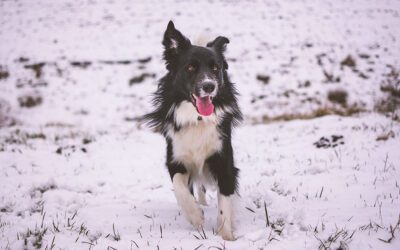Skin Allergies in Dogs and Cats
Skin allergies are very common in both dogs and cats and can be a cause of great distress for both the animal and their owner. This article looks at the most common cause of skin allergies in dogs and cats.
ATOPY
What is atopy in dogs and cats?
Atopic dermatitis is an inappropriate immune response to environmental substances that results in inflammation of the skin. Several allergens in dogs and cats can be responsible for triggering atopy including grass pollens, house dust mites and storage mites, and yeasts.
Why has my dog got atopy?
Any dog can be affected by atopic dermatitis, but there is a genetic predisposition in certain breeds such as terriers and retrievers. Allergies tend to develop in middle aged dogs, from 1-3 years of age.
What does Atopy look like in dogs?
The primary sign is itching – especially of the ears, axillae (armpits), groin and limbs. Reddening of the skin and rashes occur due to the inflammatory process. Self-excoriation (scratching, biting and rubbing) damage the skin’s protective barrier, leading to hair loss and secondary bacterial or yeast infections.
How do I know if my dog has atopy?
Atopy is a diagnosis of exclusion, and involves identifying and treating any other potential underlying factors such as external parasites. There is no specific test for atopic dermatitis, but both blood tests and intradermal skin tests can be performed to identify likely allergy triggers. There will often be more than one allergic trigger.
How do you treat atopy in dogs?
Where possible, exposure to the allergen should be reduced. The mainstay of treatment is symptomatic to reduce the itch. This involves the use of immunomodulatory drugs and sometimes antibiotics to treat secondary infection. In addition, shampoos and oral supplements containing Omega-3 fatty acids can be given to improve skin and hair health, and reduce inflammation.
FOOD ALLERGY DERMATITIS
What are food allergies in dogs?
Food allergies are when a dog displays an allergic reaction after eating a certain food type. Food allergy is relatively uncommon, affecting around 10% of allergic dogs.
Why does my dog have food allergies?
Any dog can be affected, but there is a genetic predisposition in breeds such as German Shepherd dogs. Allergies tend to develop in middle aged dogs.
What signs do dogs show if they have food allergies?
Signs are similar to those of atopy, with generalised itching and the development of rashes and secondary infections. The face or perineal region may be more commonly affected. There may also be gastrointestinal symptoms, such as vomiting or diarrhoea.
How can I tell if my dog has food allergies?
This involves a diet trial, exclusively feeding a single source, novel protein and carbohydrate diet for 6-12 weeks. If the symptoms subside during this period, and no additional treatment is required other than the diet change, this indicates the likely source was dietary. However, the only way to confirm which allergen a dog is reacting to is to perform a challenge test, with reintroducing protein and carbohydrate sources one by one until an allergic response is triggered. This step is often avoided once a suitable diet is found, to reduce the risk of skin flare up.
How do I feed my dog with allergies?
Once diagnosed, the treatment is to simply avoid the allergen in the diet. However, allergies can continue to develop over time to new allergens and the process may have to be repeated.
FLEA ALLERGY DERMATITIS
What is flea allergy dermatitis?
This is the most common cause of skin disease in cats.
Why is my cat allergic to fleas?
Middle aged to older cats are most prone to developing allergies although any breed of cat may develop an allergy.
What are the symptoms of flea allergy dermatitis?
The most common presentation is military dermatitis, which means lots of small scabs across the cat’s body. These tend to be most concentrated around the neck and rump. Often, there is hair loss and scabbing. Cats may be seen to groom excessively. Flea dirts are often found, however, because this is a true allergy it may only take one or two flea bites to cause an allergic reaction and evidence of fleas may be lacking.
How can I tell if my cat is allergic to fleas?
A wet paper test will usually show presence of flea dirts in the coat; coat brushings placed onto wet paper show red spots dissolving (these are the flea droppings). Even in the absence of obvious flea dirt, this is a diagnosis of exclusion with regular treatment for fleas recommended for all pets in the household. The house itself may need to be treated to remove the reservoir of flea eggs and larvae in soft furnishings.
How do I treat my cats flea allergy dermatitis?
Allergic cats will usually require immunomodulatory treatment to stop the itch, plus treatment may be needed for secondary skin infections. Once the skin is healthier and flea populations have been controlled, regular flea treatment may be all that is required to prevent flare ups. Oral supplements containing omega-3 fatty acids can help to support skin and hair health. Omnicutis is a complete skin support supplement, with high levels of Omega-3 fatty acids, plus zinc and herbal extracts which help to modulate the immune response and support natural skin health.





0 Comments